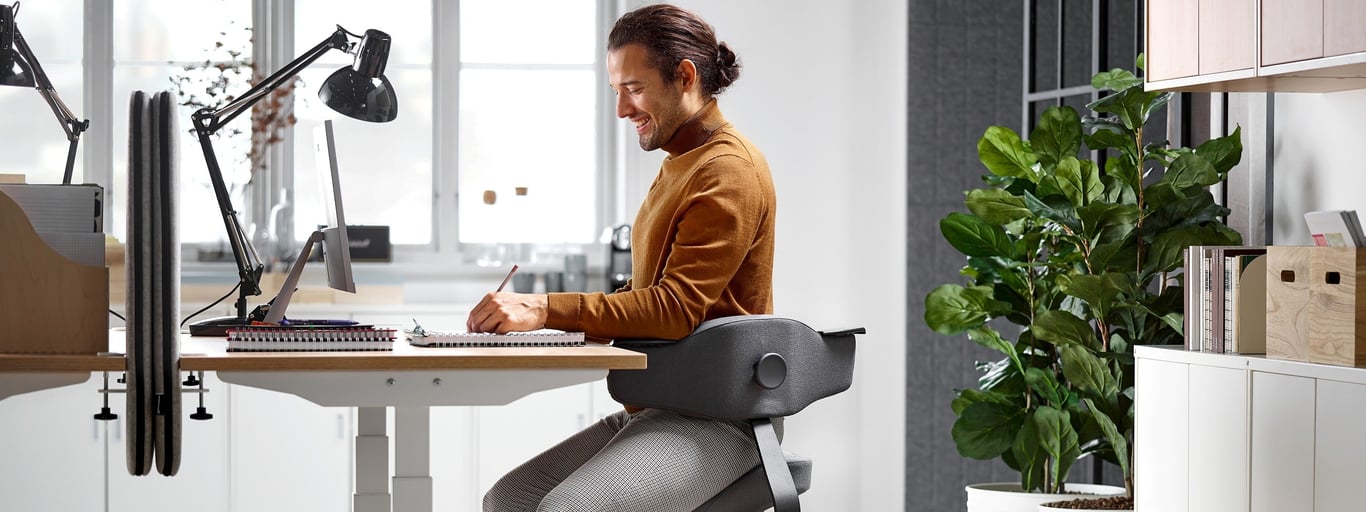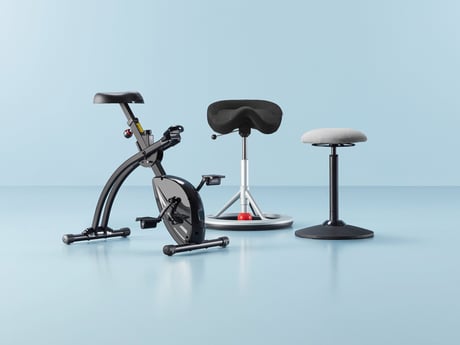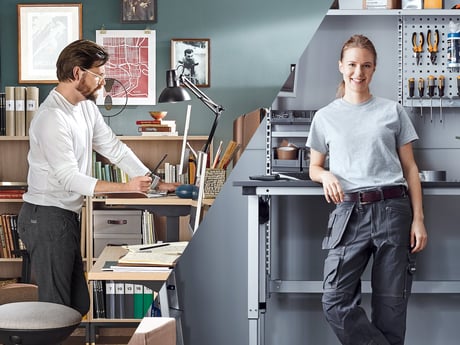How dynamic sitting can reduce back pain and musculoskeletal problems

A lot has been written about the risks of sitting for long hours but not all workplaces give you the flexibility to stand up, so what can you do? It may not be possible to sit less but it is always possible to sit better. Static sitting prevents your body from getting the movement it needs. Slouching is also one of the worst positions for your body, putting too much pressure on your back and neck. Dynamic sitting is an easy way to reduce the strain that sitting places on your body. Our simple tips will help you stay active while you sit.
How to change the way you sit at work
Sit on a balance stool
A balance stool (or active chair) keeps your body moving while you sit by encouraging the same natural shifts in posture that occur when standing or walking. This movement improves posture, reduces stress on the body and strengthens back and core muscles. There are a number of different types of active seat available including balance balls, wobble stools and saddle chairs. What they all have in common is that they make your body work to keep you in an upright position, engaging a range of muscles in your back, legs and abdomen. These chairs also require a more open angle between your legs and torso, which improves the alignment of your spine in relation to your pelvis and prevents you from slouching. The new position also makes your legs do more work, which takes the pressure off your lumbar region and reduces strain on the discs, helping to alleviate back pain.
Use an adjustable footrest
An ergonomic footrest with a tilting platform that tracks shifts in your position is an easy way to support natural movement while sitting at your desk. It will encourage a gentle but constant rocking motion that keeps your legs moving and increases blood flow. This will reduce pressure on your legs, which can improve your circulation and relieve pressure on your lower back. Plus, the raised position of your feet means you’ll be able to sit back in your office chair without slouching, allowing the backrest to fully support your back in order to improve posture and reduce tension.
Start doing simple exercises at your desk
Small movements make a difference. Try doing very simple exercises to stay active in your seat.
From head to toe:
Move your head from side to side: roll your neck slowly in a circular motion and move your head from side to side to activate the muscles in your neck.
Stretch your arms: lock your hands together and stretch your arms out straight in front of you or above your head with your palms facing out to release stress on your shoulders.
Clench your buttocks: clench and release your buttocks (five seconds each) to strengthen the gluteus maximus. Strengthening this muscle prevents your lower spine and hamstrings from working harder than necessary. For best results, repeat this exercise 30 times twice a day.
Swing your legs: keep your legs moving beneath your desk by kicking and swinging them.
Roll your ankles: roll your ankles in a circular motion to stretch your lower leg muscles.



